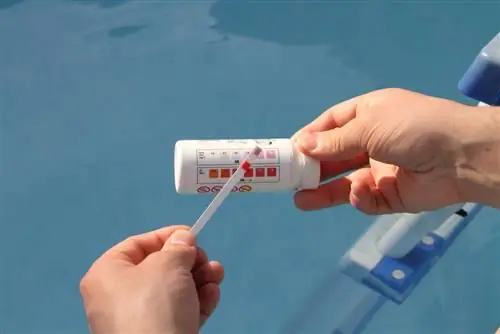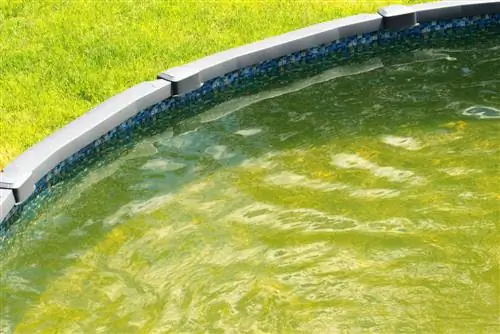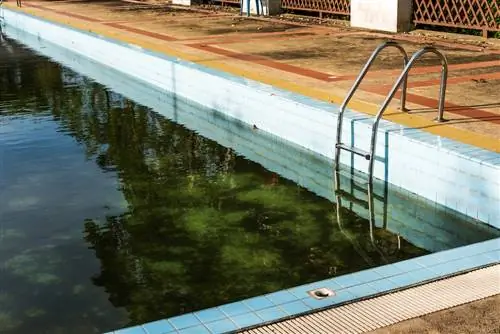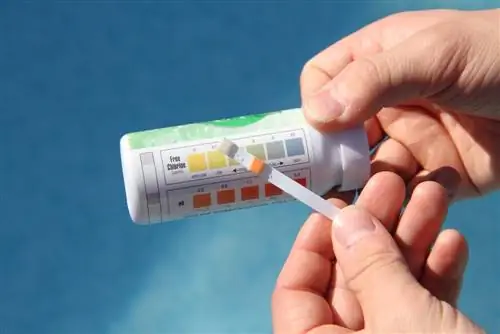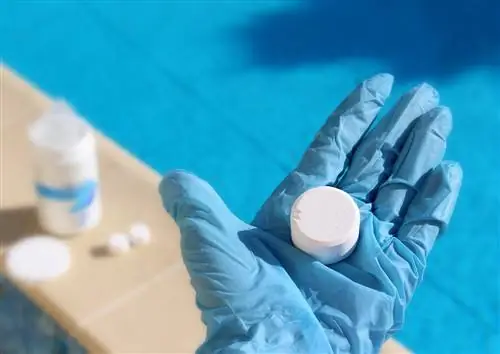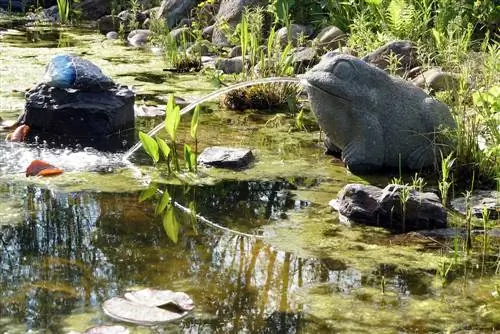- Author admin [email protected].
- Public 2023-12-16 16:46.
- Last modified 2025-01-23 11:22.
The pool water should be checked at regular intervals to ensure long-lasting cleanliness of the swimming pool. Measuring the pH value is essential in order to largely rule out possible algae formation. If the value is too low, it must be regulated.
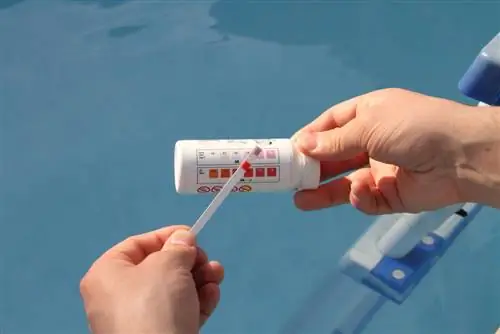
What helps against algae in the pool if the pH value is too low?
If the pH value in the pool water is too low, algae formation can be encouraged. To effectively remove algae, measure the pH, loosen algae from the pool wall and floor, remove debris, perform shock chlorination and turn on the sand filter system.
Does algae grow if the pH of the pool water is too low?
If the pH value of the pool water is too low,algae formation can be promoted. Therefore, make sure that the value is always in a range between 7.00 and 7.40. If the pH value deviates, algae can grow unhindered in the pool. In the long term, this can lead to water tipping and should therefore be kept in mind.
How to remove algae due to low pH?
If the pH value of the pool water is too low, you should follow a fewimportant steps to eliminate the algae. It is best to treat the infestation as follows:
- Measure the pH value of the water and check the chlorine content (€59.00 on Amazon).
- Loose the algae from the pool floor and walls. A soft brush is particularly helpful.
- Now remove all deposits from the water.
- To clean the pool thoroughly, you should then carry out shock chlorination.
- Check the pH again.
- Finally, you should switch on the sand filter system.
Tip
The formation of algae at an increased rather than too low pH value
If you measure a pH value in your pool water that is too high, you should fix it as soon as possible. You can use a simple home remedy for this. To lower the pH, all you should do is mix some vinegar into the pool water. You need one liter of inexpensive vinegar for about ten cubic meters of water. Be sure to pay attention to the amount required.

